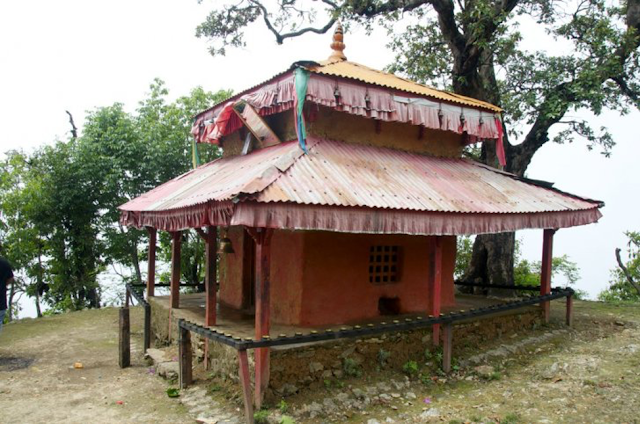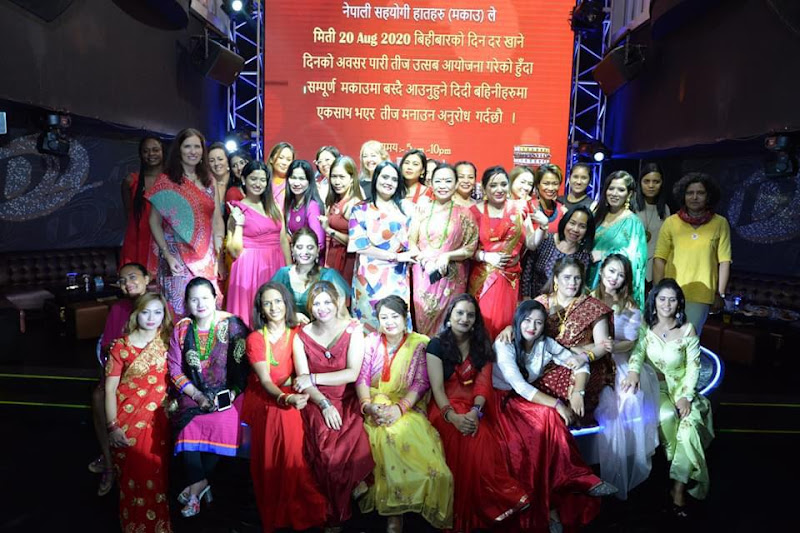Located in the Mahabharat mountain range in Ward No. 5 of Ichchha Kamana Rural Municipality, Chitwan district, Ichchha Kamana Mai Temple stands at an elevation of approximately 1800 meters above sea level, starting from Fisling Bazaar on the Prithvi Rajmarg and heading south. The Ichchha Kamana Mai Temple is situated in the Chisapani area, and one can reach there by driving from Fisling Bazaar for about 1 hour and 30 minutes, followed by a 10-minute walk from Chisapani.
The temple is the only structure on top of the hill in the Ichchha Kamana Rural Municipality, near the Ichchha Kamana Municipal Office in Kurintar. This Mai Temple holds cultural and religious significance in the region. To visit the Ichchha Kamana Mai Temple, you can take a vehicle from Fisling Bazaar to Chisapani and then a short 10-minute walk to reach the temple.
 |
| Ichchha KamanaTemple in Kurintar |
The Ichchha Kamana Mai Temple and the Manakamana Temple are situated on opposite hills in Kurintar. According to legend, Manakamana Mai had seven sisters, including Jethi Budhi Kanya Mai and Mahili Chimkeshwari Mai, residing towards the western direction from the Manakamana Mai Temple on the Chhimkeshwari hill in Tanahun district. Sahili Bahini is in Gorakhakalika Mai, residing in Gorakha district's Sadar Mukam Gorakhakalika. Kahili Bahini is Manakamana Mai, Thainli Bahini is Ichchha Kamana Mai, and Muni Bahini is Annapurna Mai. Among these seven sisters, Manakamana Mai is the most famous from a religious perspective. The construction of the cable car has further increased the popularity of Manakamana.
The term "Ichchha Kamana" refers to fulfilling the wishes of devotees. There is an interesting story between Ichchha Kamana and Manakamana, two sisters who are part of this narrative. There has been a disagreement between them regarding who is more significant. In the course of this dispute, Ichchha Kamana supposedly cursed Manakamana, stating that even tigers would sacrifice themselves at her temple. In response, Manakamana cursed Ichchha Kamana, declaring that devotees would never visit her temple. In the present context, analysis suggests that due to this curse, there might be fewer devotees visiting Ichchha Kamana's temple.
Ichchha Kamana's establishment was initially done by the Sen Kings of Makwanpur in the form of a fortress on the hill. Currently, Ichchha Kamana's temple has been constructed in the Pagoda style with two spires. Every year, during the Haribodhini Ekadashi (Thulo Ekadashi) after the Panchami date in the month of Mangsir, a grand fair takes place in Ichchha Kamana. During the fair, offerings like colorful threads, eggs of ducks and hens, and sacrifices of goats are made. Devotees also offer bells and tridents. Additionally, marriages of young couples also take place in Ichchha Kamana's fair
The area around the temple has settlements of the Gurung, Gharti, and Chepang communities. In the nearby Bandeltar, there is a significant Gurung community. Tourists visiting Ichchha Kamana for the first time are mesmerized by the natural surroundings, and the Gurung community in Bandeltar, Chandi Bhanjyang, Pam Danda, Chisapani, Sisneri, and Chaotara villages provide further insight into rural life for tourists. In the forest above Ichchha Kamana, the blooming rhododendrons in February and March add vibrant colors to the local environment. On clear days, Ichchha Kamana offers a panoramic view of the majestic Himalayan range, including Ganesha Himal in the west to Machapuchare in the east. One can also explore places like Bharatpur, Narayangadh, Hetauda, and Tandi, up to Kathmandu's Thankot.
The journey to Ichchha Kamana from the Prithvi Highway is facilitated by small vehicles such as jeeps and motorcycles, starting from Fisling. In this area, there is electricity and internet facilities. The opening of hotels has increased in response to the growing number of tourists. Here, one can explore the culture of the Gurung and Chepang communities, as well as the agricultural practices in rural areas. The Trishuli River flows along the Prithvi Highway, and the scenic beauty of the Mahabharat Range, visible in the shape of Nagbeli, adds to the natural diversity. With the diversity offered by nature, Ichchha Kamana has become a destination for tourists interested in studying the culture of the Gurung and Chepang communities, as well as the biodiversity of the region.










Comments
Post a Comment